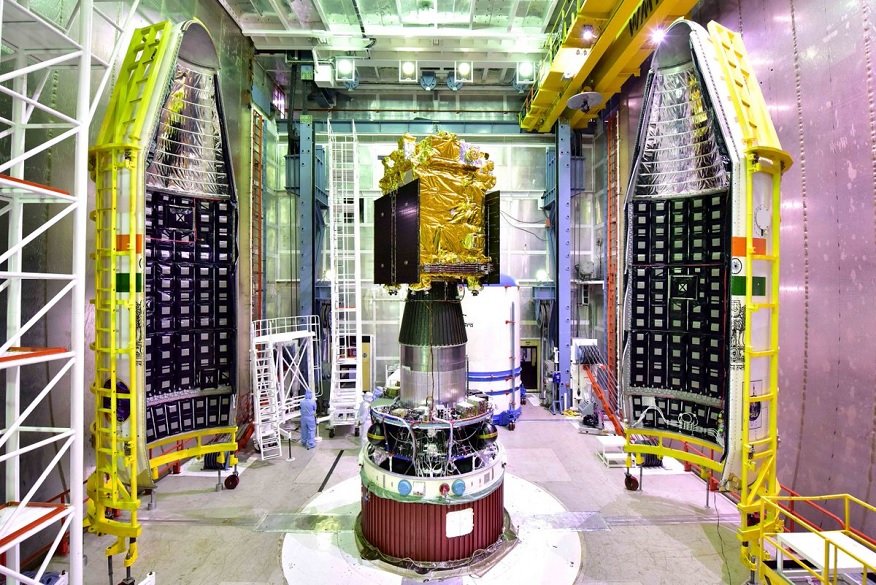Mission To Sun: IISER Pune Scientist Helps Develop Instrument For ISRO’s Aditya-L1 Mission

Pune, 31st August 2023: Aditya-L1 will be the first space based Indian mission to study the Sun. A PSLV (Polar Satellite Launch Vehicle) will carry the Aditya-L1 spacecraft and place it in a halo orbit around the first Lagrange point (L1) of the Sun-Earth system, which is one of the five points where a spacecraft experiences no force due to the sun-earth system. L1 is about 1.5 million km from the Earth toward the Sun. This is only about 1% of the Sun-Earth distance, yet this point offers significant advantages to studying the sun.
A spacecraft placed in a halo orbit around L1 can continuously view the Sun without any obstruction. This makes it possible to continuously observe solar activity. This point is outside the Earth’s magnetosphere, so sampling of charged particles and studying magnetic aspects of the Sun becomes feasible. The Aditya-L1 spacecraft is like an observatory in space and carries seven instruments. Four of these will observe the photosphere, chromosphere and the outermost layers of the Sun (the corona) via electromagnetic radiation and three of them will sense charged particles and magnetic field at L1 point.
The suite of instruments on board Aditya-L1 is expected to provide crucial observations to advance the existing knowledge about coronal heating, coronal dynamics like coronal mass ejections, flares, co-rotating interaction regions, effect of the coronal dynamics at the Sun-Earth L1 point, and the source regions of solar spectral irradiance variation in the near UV spectral band.
The spacecraft will be transferred after launch into an elliptical orbit around the Earth. Later, it will move to the final L1 halo orbit. The entire journey will be over a period of three months. The Aditya-L1 mission is expected to have a lifetime of five years.
Aditya-L1 Mission and Science Objectives
The Aditya-L1 spacecraft will carry seven scientific instruments:
- Visible Emission Line Coronagraph (VELC)
- Solar Ultra-violet Imaging Telescope (SUIT)
- Solar Low-energy X-ray Spectrometer (SoLEXS)
- High Energy L1 Orbiting X-ray Spectrometer (HEL1OS)
- Aditya Solar Wind Particle Experiment (ASPEX)
- Plasma Analyser Package for Aditya (PAPA)
- MAGnetometer (MAG)
Aditya Solar Wind Particle EXperiment (ASPEX)
The ASPEX payload will observe the proton and alpha particle composition of the Solar wind. The primary science objective of this payload is to understand the origin of solar wind as well as supra-thermal and energetic particles.
ASPEX consists of particle analysers to carry out systematic and continuous in-situ measurement of solar ions over an energy range spanning 100 eV to 5 MeV/n originating from solar wind and coronal mass ejections (CME), arriving at L1. ASPEX has two different subsystems namely SWIS (Solar Wind Ion Spectrometer) and STEPS (Supra-Thermal & Energetic Particle Spectrometer). Two different techniques are employed to construct the particle spectrometers which cover the entire energy range. SWIS uses an electrostatic analyzer with a large area imaging microchannel plate detector to analyze ion energy along with its arrival direction. The ion energy range covered is 100 eV-20 keV. Protons and alpha particles will be separated by a magnetic analysis technique in this instrument. Variation in the proton to alpha particle ratio is a marker of solar activity. Measuring this ratio at the L1 point provides a peek into the nuclear reactions taking place in the Sun.
STEPS covers the higher energy range and will measure spectrum of protons as well as heavier particles in the energy range of 20 keV/n to 5 MeV/n. STEPS has multiple units each of which has a narrow conical field of view. These will provide particle spectrum measurements from six directions.
ASPEX has been developed by Physical Research Laboratory (PRL), Ahmedabad with contributions from IISER Pune. The hardware was developed in close collaboration with Space Application Centre (SAC), Ahmedabad.
Prof. Bhas Bapat from IISER Pune has been involved with this work since his earlier tenure at PRL, Ahmedabad and continues to be part of the team. He contributed in a major way to the design and implementation of the SWIS sub-system.
Prof. Bapat’s area of research is experimental atomic and molecular physics. This research involves manipulation and detection of charged particles and photos to unravel atomic and molecular reactions. The expertise in instrumentation emerging from research in his former group has enabled the development of this instrument. The instrument was first thought of in 2013 and was proposed to ISRO for the Aditya-L1 mission. SWIS is one of the smaller payloads weighing about 13 kg and has a footprint of about 35 x 40 cm.
For full details of the mission, please visit https://www.isro.gov.in/Aditya_L1.html





